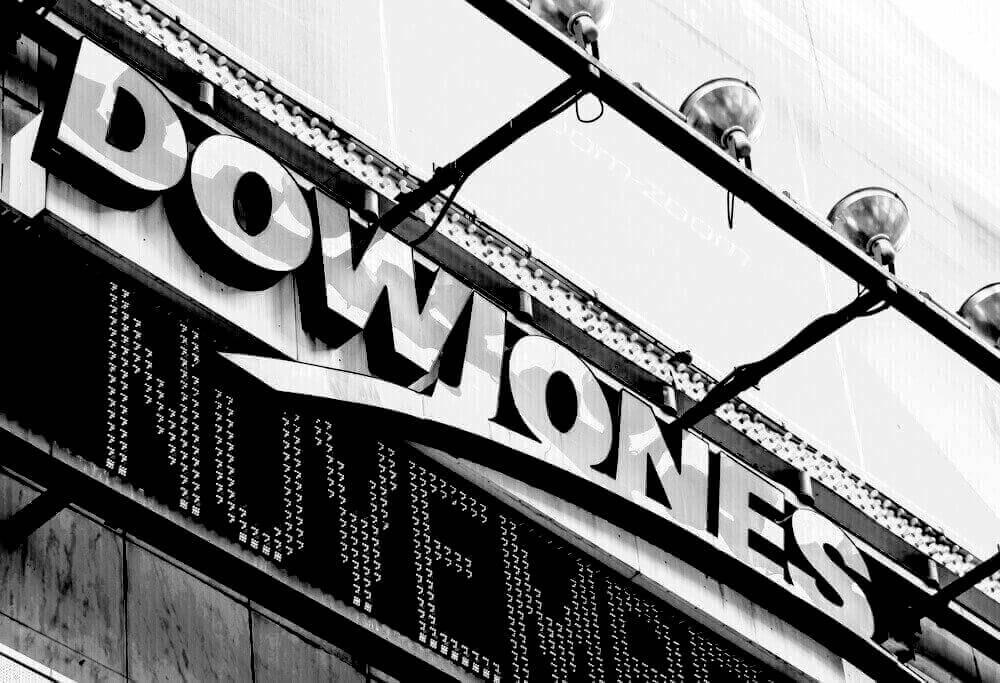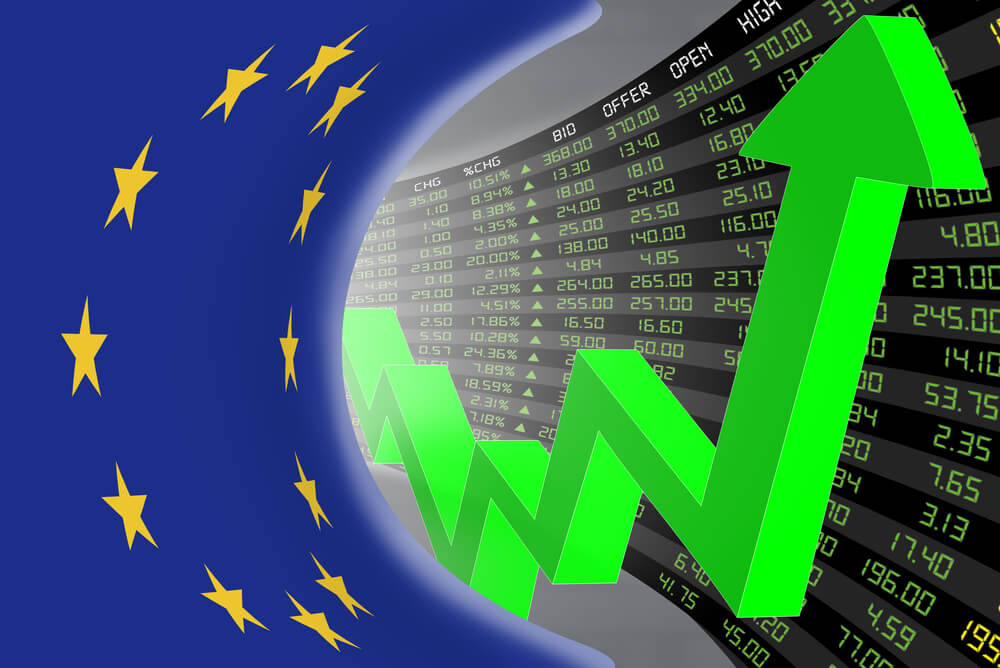
Wall Street Experienced its Worst Week Since October
Highlights
- The Dow Jones dropped by 1.58%; the selective S&P 500 yielded 1.31%, and the Nasdaq Composite Index declined by 0.92%;
- The Nikkei plummeted by 3.29% on fears of a stimulus cut;
- STOXX 600 sank to its two-week low due to a fall in mining stocks;
- Kospi slumped by 0.83% due to concerns about the Fed’s aggressive policy;
- Hang Seng is down by 1.08%. China kept its benchmark lending rate unchanged.
Wall Street suffered its worst week since October 2020. On Friday, the Dow Jones dropped by 1.58% or 533 points, to 33,290, and in the set of the last five sessions, it lost 3.5%.
As for the selective S&P 500, it yielded 1.31% and, at the same time, experienced a 1.9% weekly decrease. Likewise, the Nasdaq Composite Index declined by 0.92% at the end of the week, with a slight 0.3% weekly loss.
On Friday, the Fed official hinted at an interest-rate increase in 2022 resulting from a faster than the expected price increase. Thus, the central bank mentioned a possibility of returning to the hard-line in monetary policy sooner than expected. As a result, it has caused concern about its repercussions on economic growth.
Jim Bullard, the CEO of the Fed bank of St. Louis, declared that the reopening would be more significant than expected, and in that event, inflation will be more robust.
Meantime, CureVac Bounced Over 9%
The last trading day of the previous week didn’t have any significant macroeconomic references. Consequently, Bullard’s words happened to be decisive in the market.
The financial and the basic materials sector grouped in the S&P 500 lost more than 6% of their value in the last five days. Meanwhile, the energy and industrial sectors cud 5%, moving away from the excellent performance they enjoyed for being the most benefited from the reopening.
With this scenario, the focus was on the pharmaceutical companies. Among the biotech firms, CureVac bounced over 9% after plummeting almost 40%.
The performance of Adobe shares showed movent against the current trend. They posted new all-time highs.
The yield on the 2-year Treasury bond increased to 0.258%, and the 10-year bond dropped to 1.443%. At the same time, the dollar experienced its most significant jump in more than a year due to the Fed’s outlook.
Nikkei Losses More than 3% On Stimulus Cut Fears

At the beginning of the trading week, the Tokyo stock market opened lower, and in a few minutes, it plummeted by 2%. After the last meeting of the Fed, investors are concerned about rising inflation forecasts for the year.
The broader Topix index fell by 2.41% or 47.11 points to 1,899.45.
Among the Japanese stocks, the real estate sector accumulated the main losses. The insurer and the chemistry firms followed them.
Investors in the Japanese market avoided embarking on risky operations and sold shares of essential companies.
Japanese investors reacted to the Fed’s Bullard’s comments. According to Rodrigo Catril, a senior strategist at National Australia Bank, despite Bullard being very hawkish, his comments contributed to volatility due to market sensitivity.
Among the main shares in Tokyo, Fast Retailing dropped by 4.35% to 78,880 yen. Meanwhile, SoftBank Group reduced by 3.51% to 7,559 yen.
Moreover, Nissan slumped by 4.07% to 523.1 yen, and Toyota yielded 1.98% to 9,638 yen.
The Pharmaceutical firm Eisai has recently been overwhelmed by buying orders after the US approved the Alzheimer’s drug it developed with Biogen. The company’s shares advanced by 0.62% to 12,150 yen.
Toyota Motor, a multinational automotive manufacturer, registered the highest volume of operations at the beginning of the day. The company’s shares cut more than 1.3%. The Softbank group followed with a decrease of more than 2.9%.
Hong Kong Ended with a Decrease of 0.22%
Hang Seng, the Hong Kong stock exchange benchmark index, declined on Monday in line with other Asian markets.
The US Fed’s hints about raising interest rates resulted in Hang Seng’s most considerable losses in two weeks. At the close of the trading session, it posted a decline of 1.08% or 312.27 points at 28,489.00. Meanwhile, the Hang Seng China Enterprises Index slipped by 0.93% to 10,547.86.
Among the companies that posted the most significant increases were AAC Technologies. It surged by 5.15%. At the same time, Xinyi Solar added 4.55%.
The biggest loser of the session was Haidilao International Holding Ltd, diving by 5.06%.
All the sub-indices settled in negative territory. Commerce and industry dropped by 0.47%, and Real Estate yielded at 1.16%. Meanwhile, services lost 1.86%, and finance sank by 1.89%.
As for the Chinese state titles, the day has been better for China Mobile, the country’s telephone operator.
China kept its benchmark lending rate unchanged, which was already expected in the market.
The one-year loan prime rate remained at 3.85%, and the five-year LPR at 4.65%.
European Shares Sank to a Two-Week Low
European shares started Monday in negative territory. Mining and banking stocks slid to a two-week low.
The pan-European STOXX 600 was trading 0.60% lower, reaching its lowest since June 3.
Mining stocks declined by 0.6% due to a fall in metals prices. Meanwhile, banking stocks yielded 0.5%.
Michael Hewson, a chief market analyst at CMC Markets UK, mentioned investors’ concern about Fed’s premature performance.
The STOXX 600 climbed to record highs this month. Moreover, analysts believe that discussions about tapering were premature.
Earnings Profile in Europe is Relatively Stronger than in the US
 US stocks experienced a two-month sluggishness until they reclaimed their all-time highs. However, the US benchmark has not been able to outperform the STOXX 600. Concerns over the impact of rising inflation resulted in a shift of investors’ interest to the European index’s greater number of value and cyclical stocks.
US stocks experienced a two-month sluggishness until they reclaimed their all-time highs. However, the US benchmark has not been able to outperform the STOXX 600. Concerns over the impact of rising inflation resulted in a shift of investors’ interest to the European index’s greater number of value and cyclical stocks.
Gina Martin Adams, a chief equity strategist at Bloomberg Intelligence, wrote that the US was in its peak recovery stage where it has become expensive. Also, last month, the country’s economic surprises shortly turned negative. Meanwhile, readings in the Eurozone stayed elevated.
Companies that recovered from the recession account for 17% of the S&P 500. In contrast, this number is as high as 30% for the STOXX 600 index.
Last week, investors continued to prefer Europe over the US.
However, despite rising demand, exposure to Europe is not stretched, with allocation stuck near a decade low. According to Goldman Sachs, the region remains the most under-owned market.
The Kospi Followed the Decline of International Stocks
Kospi, the main index of the Seoul Stock Exchange, slumped by 0.83% or 27.14 points, to close at 3,240.79. During the trading session, the benchmark index dipped to as low as 3,225.56 points resulting from concerns about the Fed’s aggressive policy suggesting interest rates rose earlier than expected.
The Kosdaq technology stock index also slipped by 0.48% or 4.89 points to 1,010.99 units.
Investors became worried about the Federal Reserve’s discussions about the interest rate hike plan.
Moreover, Samsung Electronics slipped by 0.75%, and SK Hynix, the second-largest chip manufacturer, fell by 2.01%.
Naver, South Korea’s top internet provider, lost 0.25%. Samsung Biologics, a South Korean biotechnology company, added 2.15%.
Hyundai Motor, the leading car manufacturer in the peninsula, dropped by 0.85%. Meanwhile, Samsung SDI, a rechargeable battery manufacturer, advanced by 1.04%.
The won fell 2.40 against the US dollar, trading at 1,134.70 won at the session’s close.
-
Support
-
Platform
-
Spread
-
Trading Instrument




